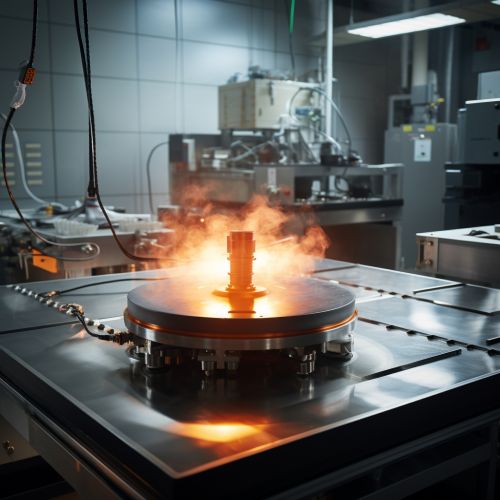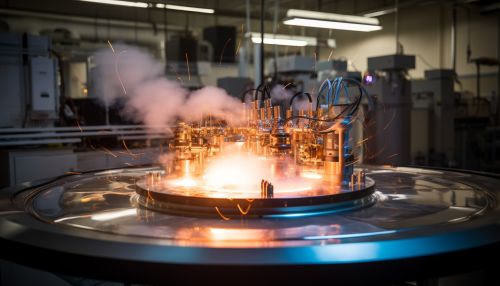High-Temperature Superconductivity
Introduction
High-temperature superconductivity refers to the phenomenon of certain materials exhibiting superconducting properties at temperatures higher than those of traditional superconductors. This is a field of immense interest in condensed matter physics and materials science due to the potential for revolutionary applications in energy transmission, MRI, and quantum computing among others.


Discovery
The discovery of high-temperature superconductivity was a significant breakthrough in the field of materials science. In 1986, Müller and Bednorz discovered the first high-temperature superconductor, a lanthanum-based cuprate perovskite material, which exhibited superconductivity at 35 Kelvin, significantly higher than the previous record of around 20 Kelvin.
Mechanism
The exact mechanism behind high-temperature superconductivity is still a topic of ongoing research. However, it is generally agreed that the phenomenon involves the pairing of electrons into Cooper pairs, similar to conventional superconductors. The difference lies in the nature of the attractive interaction that leads to the formation of these pairs.
Types of High-Temperature Superconductors
There are several types of materials that exhibit high-temperature superconductivity. These include cuprates, iron-based superconductors, and some heavily doped semiconductors.
Cuprates
Cuprates are the most well-studied class of high-temperature superconductors. They are layered materials with copper-oxide planes, where superconductivity primarily occurs.
Iron-Based Superconductors
Iron-based superconductors, discovered in 2008, are the second class of high-temperature superconductors. They have multiple similarities with cuprates, but also exhibit unique properties that make them a distinct class.
Heavily Doped Semiconductors
Some heavily doped semiconductors also exhibit high-temperature superconductivity, although the temperatures are generally lower than those of cuprates and iron-based superconductors.
Applications
High-temperature superconductors have the potential to revolutionize many areas of technology. They could be used in power transmission lines, magnetic resonance imaging (MRI) machines, and even in the construction of high-speed maglev trains.
Challenges and Future Directions
Despite the immense potential of high-temperature superconductors, there are several challenges that need to be overcome. These include the brittle nature of these materials, difficulties in fabricating long wires, and the need for cooling, although to a lesser extent than conventional superconductors.
